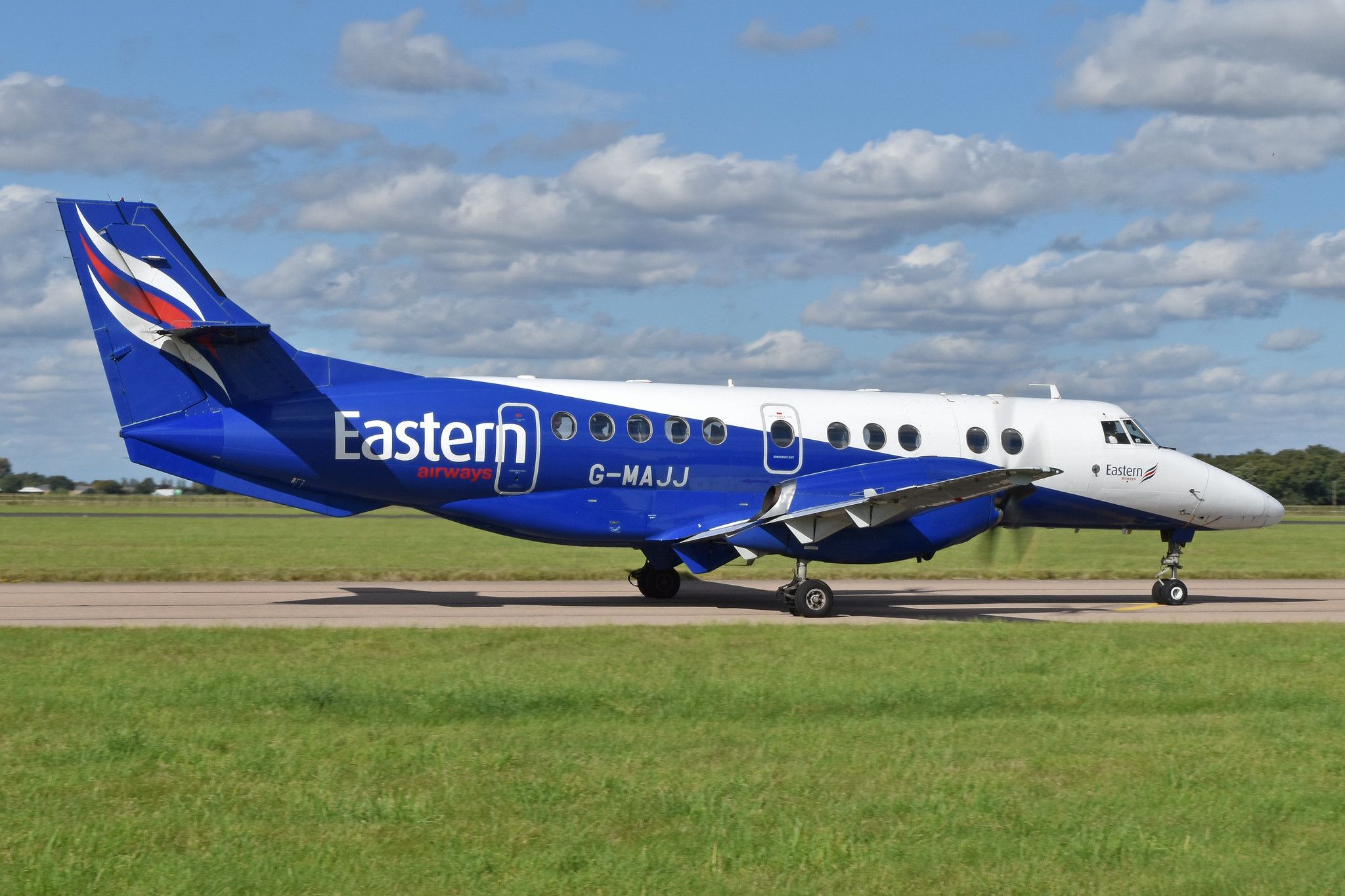Exactly 31 years ago yesterday, on September 25, 1991, the BAe Jetstream 41 took off on its maiden flight from Glasgow Prestwick Airport (PIK) in Scotland. In the late 1960s, in a bid to remain independent and compete with Hawker Siddeley and the British Aircraft Corporation, Handley Page decided to build a plane for the United States commuter and regional airline market.
The idea was to build a small low-wing turboprop airliner with a pressurized cabin. For the aircraft to succeed in the United States, they needed to restrict it to carrying less than 20 passengers. Aviation rules in the USA stipulated that any commercial airliner carrying 20 or more passengers must have a flight attendant.
The program eventually got taken over by BAe
After some initial success, Handley Page encountered financial difficulties and lost a big contract it had signed with the United States Air Force (USAF). Now looking bankruptcy in the face, it sold the right to build the aircraft to a new company called Scottish Aviation.
In April 1977, Scottish Aviation was taken over by British Aerospace (BAe), and a decision was made to develop the plane. BAe did this by adding more powerful engines and advanced Dowry Rotol propellors. They also redesigned the wings, improving the plane's speed and range.
Now renamed the BAe Jetstream 31, the plane successfully entered service with Eastern Air Lines, Pan Am, United, American, Northwest, TWA, and USAir.
BAe decided it wanted to build a larger plane
Following the BAE Jetstream 31s success, the British aircraft manufacturer decided that it wanted to go after Embraer, Dornier and Saab. BAe decided to build a stretched version of the plane to compete with the Brasília, the 328, and the 340.
To accomplish this, they added another 16 feet to the fuselage allowing the aircraft to accommodate 29 passengers in a 2+2 configuration just like the Jetstream 31. New engines were added, and the wings were redesigned with new ailerons and flaps.
The BAE 41 received its European airworthiness certificate on November 23, 1992, and United States certification on April 9, 1993. The first BAe 41 was delivered to Manx Airlines on November 25, 1992. Based at Ronaldsway Airport (IOM) on the Isle of Man, the airline used the Jetstream 41 for commuter flights between the island and destinations in the United Kingdom and Ireland.
In January 1996, the BAe Jetstream 41 became a part of a marketing consortium consisting of ATR, Aérospatiale (of France), Alenia (of Italy), and British Aerospace. Despite sales being initially strong British Aerospace announced in May 1997 that it was halting production of the BAe 41 after having built 100 aircraft.
Humberside Airport (HUY)-based Eastern Airways became the world's largest operator of the BAe 146 with 14 aircraft in its fleet. The aviation data and statistics website ch-aviation lists the UK regional airline as having eight 28-year-old BAE Jetstreams as still being active.
Specifications and general characteristics of the BAe Jetstream 41
- Crew: 3 (2 Pilots + Flight Attendant)
- Capacity: 29 passengers
- Length: 63 feet 2 inches
- Wingspan: 60 feet
- Height: 18 feet 10 inches
- Wing area: 350.8 square feet
- Empty weight: 14,272 lbs
- Maximum zero-fuel weight: 21,400 lbs
- Max takeoff weight: 24,000 lbs
- Maximum ramp weight: 24,100 lbs
- Maximum landing weight: 23,300 lbs
- Fuel capacity: 873 US gallons
- Powerplant: 2 × Allied Signal TPE331-14GR/HR turboprop engines, 1,650 shp (1,230 kW) each (handed GR / HR) Propellers: 5-bladed McCauley, 9 ft 6 in (2.9 m) diameter (handed GR / HR) constant-speed feathering metal propellors
Performance
- Maximum speed: 295 knots (339 mph), at 20,000 feet
- Cruise speed: 339 mph, at 20,000 feet
- Range: 891 miles
- Service ceiling: 26,000 feet
- Rate of climb: 2,200 feet per minute
- Take-off run: 5,000 feet
- Landing run: 4,200 feet
Get the latest aviation news straight to your inbox: Sign up for our newsletters today.


.jpg)
.jpg)